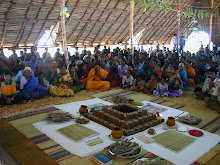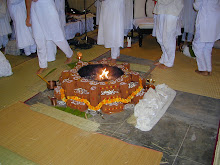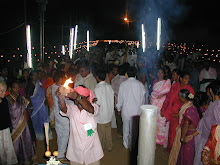Looking back, much of the journey of transformation and enlightenment (liberation from suffering) is a shift in perception. There are times I suspect that is all there is too it. Once suffering is embraced it is no longer suffering. In any case, a shift in perception plays a huge role in shamanism.
Einstein, when asked what he thought was the most important question facing humanity today, replied,
"I think the most important question facing humanity is, 'Is the universe a friendly place?' This is the first and most basic question all people must answer for themselves."
Among the most important questions you can ask yourself in the journey of transformation and enlightenment is the question: "Is the suffering in the fact or in the perception of the fact?"
If the suffering is truly in the fact, take for example a state of poverty, you would have to find that all who were poor or who have taken a vow of poverty are suffering from poverty. Poverty may be one person's suffering yet not that of another. To another there may be no suffering in it at all. Suffering is relative. It is in the perception. In this seeing lies a great key.
Even the perception of a symbol may shift. At one time the wolf was despised and feared. To say "the wolves were at the door" could mean you were very close to death of starvation. In the mind of man, the symbolism of the wolf was fearsome.
By the 1890's the wildness that was once the American Western frontier was in tatters. Very few of the great herds of elk and bison remained. It was the era of the cattlemen. The cattle were poorly adapted and starvation and death from thirst were a reality. There were also wolves for which the slow, not all that bright, cattle were an easy meal.
So the wolves killed the cattle and the cattlemen killed the wolves with poison, traps and rifles. Only the most stealthy of the wolves survived, and they continued to kill and eat the cattle. Among them was a wolf by the name of Lobo. So stealthy and preditory he was that there was a $1000 bounty placed on his head.
In 1893, an Englishman by the name of Seton, traveled from Canada to the New Mexico Territory to kill Lobo and claim the bounty. His ancestors were said to have played a part in the extermination of UK wolves, and he thought it would be an easy job-a few weeks work is all. Yet for some time Lobo outsmarted Seton at every turn. It was almost as if Lobo was supernatural.
Lobo had a mate, a white wolf name Bianca. As it turned out his love for her was his downfall. Bianca was not as cunning as Lobo, and one night Seton managed to capture her. He found Bianca howling in a trap with Lobo at her side.
Lobo ran off when the men approached, but continued to watch from a distance. The men lassoed Bianca and tied the other end of the rope to the horses. Then they ran the horses hard, dragging her until her neck was broken. Lobo watched on and began to howl.
Seton took Bianca's body home. Lobo searched and searched for her, even showing up on Seton's doorstep in his seeking. It was then that Seton had discovered Lobo's weakness. He rubbed some traps with Bianca's scent and set them.
The next night Lobo was captured. Yet Seton could not bring himself to kill Lobo. Instead he roped him, muzzled him and took him on a chain to a nearby ranch.
Lobo died that night. Whether is was from a desire for freedom, the stress of captivity, bad health, or a broken heart, no one really knows.
After Lobo's death, Seton became perhaps the world's first wolf advocate and before long, the wolf became a symbol of untamed beauty and the wildness that once was. Efforts were made to conserve wolves, not annilate them.
Man's perception of the wolf had changed with the death of Lobo.
For more on the story of Lobo vist http://blogs.dogtime.com/retrievermans-weblog/2010/11/the-story-of-lobo
For a documentary click the title above or go to http://www.etsetoninstitute.org/lobo-bbc/
Saturday, November 13, 2010
Subscribe to:
Post Comments (Atom)































No comments:
Post a Comment